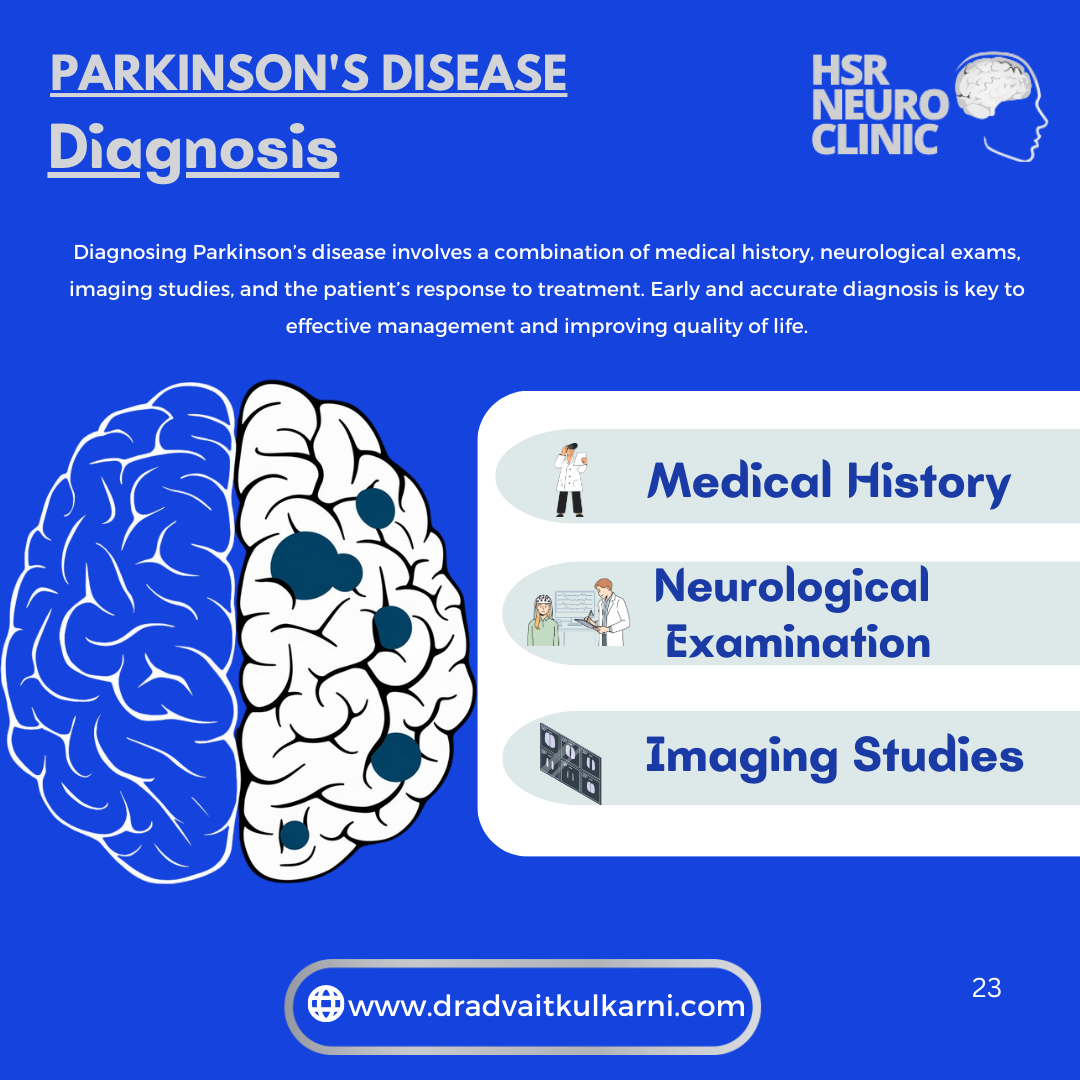+918048034088

This is your website preview.
Currently it only shows your basic business info. Start adding relevant business details such as description, images and products or services to gain your customers attention by using Boost 360 android app / iOS App / web portal.
🔬 Understanding the Diagnostic Journey for Park...

🔬 Understanding the Diagnostic Journey for Parkinson's Disease (PD) 🧠 Diagnosing Parkinson's disease can be complex, as no single test exists. The process involves a thorough clinical evaluation, a review of medical history, specialized imaging studies, and a response to treatment. Early diagnosis is key to managing symptoms and improving quality of life. Key steps in the diagnostic process include: Medical History & Symptom Review: Identifying symptoms like tremor, bradykinesia (slowness), rigidity, and postural instability. Neurological Examination: Observing motor symptoms and testing for rigidity and bradykinesia. Levodopa Response: Improvement after levodopa suggests PD, though not exclusive to it. Imaging Studies: DAT scans, MRI, or CT scans can help confirm the diagnosis and rule out other conditions. Clinical Criteria: Following established guidelines (e.g., UK Parkinson's Disease Society Brain Bank Criteria) to confirm motor symptoms and rule out other causes. Additionally, cognitive testing, blood tests, and a differential diagnosis help distinguish PD from other conditions like Essential Tremor, Multiple System Atrophy (MSA), and Progressive Supranuclear Palsy (PSP). As PD progresses, regular follow-ups with a neurologist are essential for adjusting treatment and monitoring symptom changes. Early recognition and a tailored treatment plan can significantly enhance quality of life for those affected by Parkinson’s. #ParkinsonsDisease #HealthcareInnovation #Neurology #MedicalDiagnosis #PatientCare #NeurodegenerativeDisorders #ParkinsonsAwareness #EarlyDiagnosis #MovementDisorders

